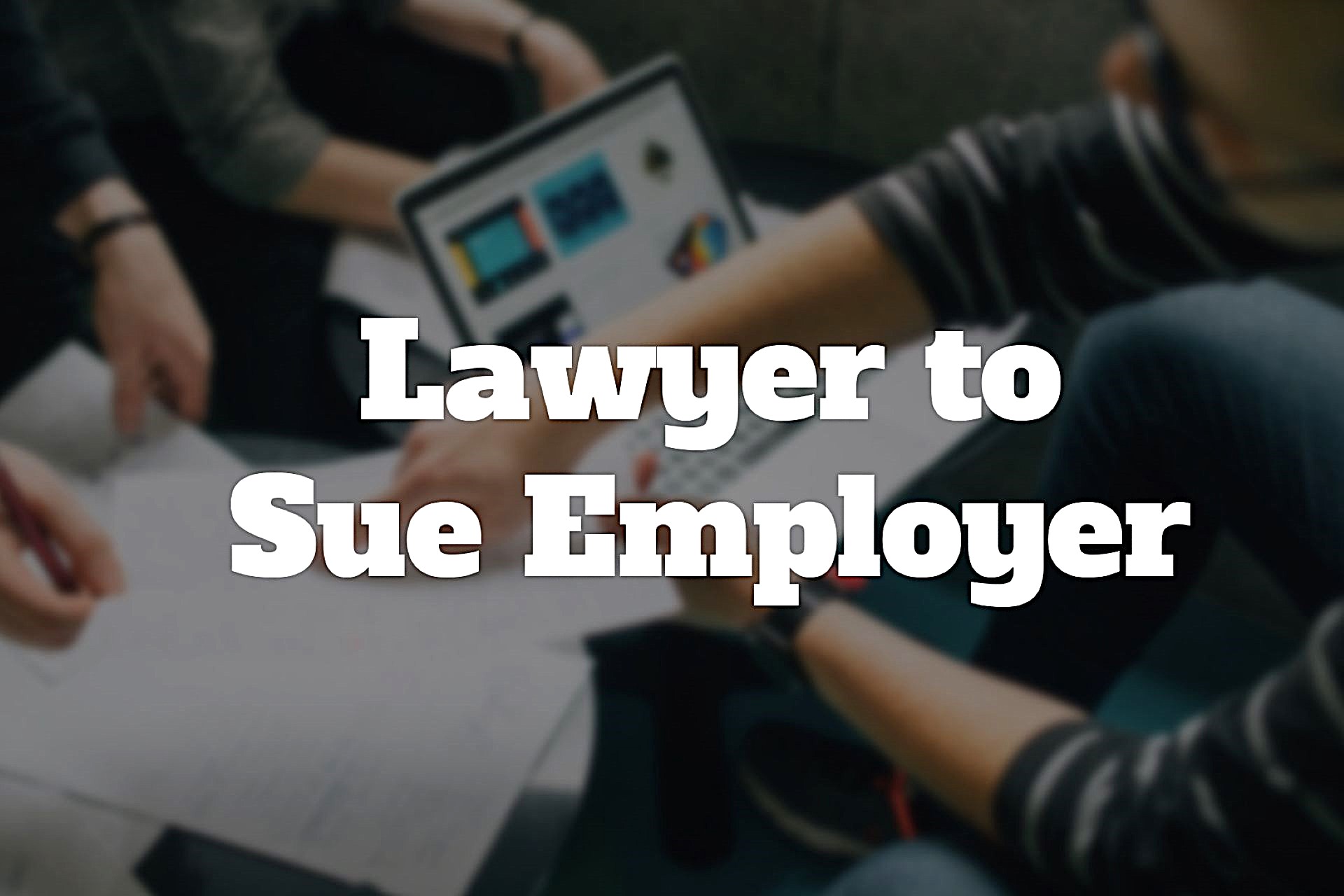Employees may consider suing their employer for various reasons, ranging from wrongful termination to wage disputes. This article will provide a comprehensive list of common reasons employees might have for pursuing legal action against their employer, including the legal grounds for each type of claim and what to consider before initiating a lawsuit.
Discrimination Based on Race, Gender, or Other Protected Characteristics
When an employee faces unfair treatment or harassment at work due to their race, gender, age, disability, or any other characteristic protected by law, this can provide a solid basis for a lawsuit against the employer. Such discrimination can manifest in various ways, including biased hiring practices, unequal pay, or being denied promotions in favor of less qualified individuals. This type of discrimination not only violates employment laws but also undermines the principle of fairness in the workplace.
Legal actions in such cases often involve proving that the discriminatory behavior was systematic or part of a broader pattern within the company. Employees may need to provide evidence such as discriminatory remarks, comparative data showing disparate treatment, or patterns of behavior that demonstrate bias. Successfully proving discrimination can lead to remedies including compensation for damages, changes in workplace policies, or even reinstatement.
Harassment in the Workplace
Harassment in the workplace can take various forms, and legal grounds for litigation often arise when such behavior becomes severe or pervasive enough to create a hostile work environment. Here’s a closer look at the different types of harassment that may lead to legal action:
Types of Harassment:
- Sexual Harassment: This includes unwelcome sexual advances, inappropriate touching, suggestive comments, and other behaviors of a sexual nature that create an uncomfortable or hostile environment. Sexual harassment can be categorized into quid pro quo harassment (where job benefits are conditioned on sexual favors) and hostile work environment harassment (where the work environment is tainted by sexually suggestive behavior).
- Verbal Harassment: This involves offensive comments, jokes, or threats directed at an individual based on their race, gender, religion, or other protected characteristics. It can include derogatory remarks, slurs, or persistent belittling that affects the victim’s emotional well-being and job performance.
- Physical Harassment: Actions such as unwanted physical contact, intimidation, or even assault can constitute physical harassment. This type of harassment creates an unsafe and intimidating work environment, making it difficult for the victim to perform their job effectively.
Legal Recourse:
Employees who experience harassment have several potential legal actions they can pursue:
- Filing a Complaint with the EEOC: In the United States, employees can file a complaint with the Equal Employment Opportunity Commission (EEOC), which investigates claims of harassment and can take action against employers who violate anti-discrimination laws.
- Seeking Compensation: Victims of harassment may be entitled to compensation for emotional distress, lost wages, and other damages resulting from the harassment. This can be pursued through a lawsuit or settlement negotiations.
- Requesting Injunctive Relief: In some cases, victims may seek injunctive relief, which involves requesting the court to order the employer to take specific actions to stop the harassment and prevent future occurrences.
Addressing harassment in the workplace is crucial for maintaining a respectful and productive work environment. Legal actions can help rectify situations where harassment is not adequately addressed through internal company procedures.
Wrongful Termination
Wrongful termination occurs when an employee is fired in a manner that breaches legal or contractual obligations. Understanding the various scenarios that can lead to a wrongful termination claim is essential for determining whether legal action is warranted. The following table outlines common reasons for wrongful termination and their legal implications:
| Reason for Wrongful Termination | Description | Legal Basis | Potential Remedies |
| Breach of Contract | Termination contrary to the terms specified in an employment contract. | Employment law and contract law; breach of express or implied contract. | Compensation for lost wages and benefits, reinstatement. |
| Retaliation for Whistleblowing | Firing an employee for reporting illegal or unethical conduct by the employer. | Whistleblower protection laws and retaliation statutes. | Reinstatement, back pay, and damages for emotional distress. |
| Violation of Public Policy | Termination for reasons that violate public policy, such as firing for jury duty participation. | Public policy exceptions to at-will employment. | Compensation for lost wages, punitive damages, and legal fees. |
| Discrimination | Termination based on race, gender, age, disability, or other protected characteristics. | Anti-discrimination laws such as Title VII of the Civil Rights Act. | Compensation for damages, changes in workplace policies. |
- Breach of Contract: When an employee has an employment contract that outlines specific terms of employment, such as job security, duration of employment, or grounds for termination, firing the employee in violation of these terms can be grounds for a wrongful termination lawsuit. This can include both written contracts and implied contracts based on company policies or practices.
- Retaliation for Whistleblowing: Employees who report illegal or unethical activities by their employer are protected by various whistleblower protection laws. Termination in retaliation for whistleblowing is considered wrongful, as it undermines the legal protections designed to encourage reporting of misconduct. This protection applies to both internal reports and external disclosures to government agencies.
- Violation of Public Policy: Some terminations are deemed wrongful if they contravene established public policies. For example, firing an employee for serving on a jury, taking legally protected family leave, or refusing to engage in illegal activities is considered a violation of public policy. These cases are often more complex and require demonstrating that the termination was directly linked to the employee’s participation in activities protected by law.
- Discrimination: Terminating an employee based on their race, gender, age, disability, or other protected characteristics violates anti-discrimination laws. Employees in such cases must typically provide evidence that their termination was linked to discriminatory practices, which can include comparative data, discriminatory comments, or patterns of biased behavior.
Wage and Hour Disputes
Wage and hour disputes commonly arise when employees believe they have not been paid correctly or fairly according to labor laws. These disputes can involve issues such as unpaid wages, improper classification of employees, and violations of overtime rules. For example, if employees are classified as exempt from overtime when they should be non-exempt, they may not receive the additional pay they are entitled to for hours worked beyond the standard 40-hour workweek. Such misclassification can lead to significant financial losses and legal action against the employer.
Moreover, employers are required to adhere to minimum wage laws, and any failure to do so can also result in wage disputes. Employees who have not been paid at least the minimum wage or who have been denied earned wages, such as tips or commissions, may have a valid claim for recovering those unpaid amounts. Legal actions in wage and hour disputes often involve investigating payroll records, employment contracts, and workplace practices to determine the extent of the violations and seek appropriate compensation.
Retaliation
Retaliation occurs when an employer takes adverse action against an employee for engaging in protected activities, such as filing complaints, participating in investigations, or exercising legal rights. This can involve a range of retaliatory actions that adversely affect the employee’s job status or working conditions.
Types of Retaliatory Actions:
- Termination: One of the most severe forms of retaliation is wrongful termination, where an employee is fired specifically because they reported illegal activities, filed a workers’ compensation claim, or participated in a legal investigation. This action is considered retaliation if the termination can be directly linked to the employee’s protected activity.
- Demotion or Reduction in Pay: Employers may retaliate by demoting an employee or reducing their pay as punishment for engaging in protected activities. This type of retaliation aims to penalize the employee financially and impact their career progression.
- Unfavorable Changes in Work Conditions: Retaliation can also manifest as changes in work conditions, such as assigning undesirable tasks, changing work schedules to less favorable hours, or creating a more hostile work environment. These actions can significantly impact the employee’s job satisfaction and performance.
- Negative Performance Reviews: Employers may retaliate by giving employees unjustly negative performance reviews, which can affect their chances for promotions, raises, or job security. These reviews are often used as a pretext to justify other adverse actions against the employee.
Legal Protections and Remedies:
Employees who experience retaliation have several legal protections and remedies available to them. Under federal and state laws, retaliation claims can be pursued through agencies such as the Equal Employment Opportunity Commission (EEOC) or through direct lawsuits. The burden of proof often lies with the employee to demonstrate that the adverse action was a direct result of their protected activity.




+ There are no comments
Add yours